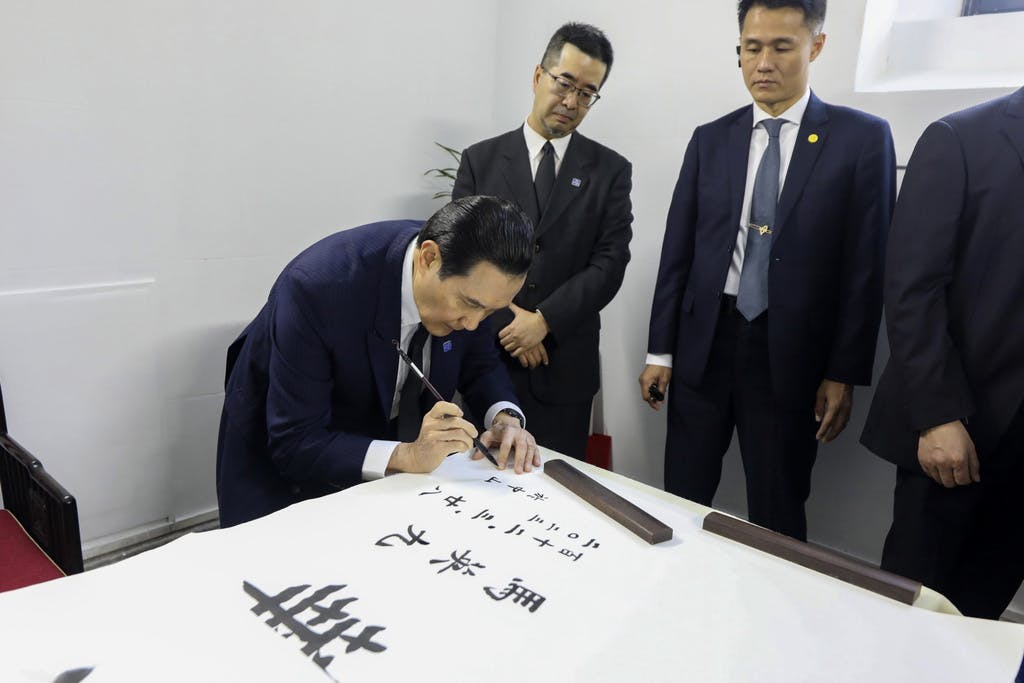Sun Yat-sen’s Tomb First Stop by Ex-President of Free China on Tour of Mainland
Sun, whose democratic ideals helped form the Republic of China, is revered by both the Communist regime at Beijing and the Free Chinese government on Taiwan.

NANJING, China — The former president of Free China, Ma Ying-jeou, began a 12-day tour of the mainland with a symbolism-laden visit to the mausoleum where a founding figure revered in both Communist China and Taiwan is entombed.
Mr. Ma visited the Sun Yat-sen Mausoleum at Nanjing, the capital when Mr. Ma’s Nationalist Party, known as the Kuomingtang, ruled China in the early part of the 20th century.
The party claimed to be the legitimate ruler of China for decades and is seen as more sympathetic to integration or unification with the mainland than the ruling Democratic People’s Party.
At the tomb, Mr. Ma paid tribute to Sun Yat-sen, the founder of the Republic of China and the Nationalist Party, giving a short speech and then bowing in front of the memorial.
“The people of both sides of the Taiwan Strait belong to the Chinese nation, are children of Yandi and the Yellow Emperor,” he told a group of Chinese and Taiwanese reporters who had been allowed to follow him on the trip, referring to mythical emperors revered as founders of China’s dominant Han ethnicity.
Taiwan, where the Kuomingtang retreated after losing the civil war in China, is today a self-governed democracy and America is its largest unofficial ally. China, however claims the island as its own.
Mr. Ma’s tour of China comes at a moment of high tensions between Taiwan and China. Just a few days earlier, Taiwan lost yet another diplomatic ally to Communist China, which has spent the past seven years pressuring countries to switch diplomatic recognition to Beijing from Taiwan.
He has framed the trip as an effort to lower tensions by promoting exchanges, bringing Taiwanese college students with him on the visit, and has said he hopes that his trip could help lower tensions. Observers expect the visit to be more symbolic than substantive.
“Both sides must pursue peace, otherwise, neither will have a future,” he said.
Mr. Ma praised Sun, who advocated for a modern Chinese nation and the overthrow of the Manchu Qing Dynasty. It was Sun who founded the Republic of China in 1912, and ruled over the mainland, very briefly.
After the retreat to Taiwan, the Kuomingtang continue to call their nation the Republic of China. Meanwhile, the Communist Party took over the mainland in 1949, and renamed the country the People’s Republic of China.
Outside the mausoleum, a crowd of curious onlookers and tourists gathered in the morning to see if they could catch a glimpse of the former President.
Most of the regular tourists expecting to be able to see the mausoleum and the surrounding park found themselves blocked from entering, though a lucky few who had reserved in advance were allowed to enter the site.
“Even though there are some difficulties on the official front, as long as there are benefits to the public and you can build a good foundation, then this will be good for the unification of both sides,” said Chen Shao’an, who had come to the mausoleum to see Ma.
Mr. Ma is also visiting the China Modern History Museum, which is the site of the old Presidential Palace in Nanjing.
